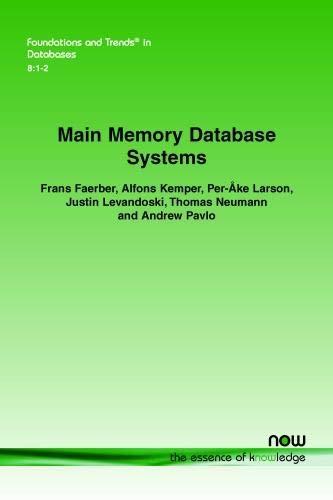Question
5) Use the following array to trace the first two iterations of the binary search algorithm for the specified target value. For each iteration, indicate
5) Use the following array to trace the first two iterations of the binary search algorithm for the specified target value. For each iteration, indicate the midpoint index, and the index range [first, last] for the sublist in the next iteration. Hint: the index starts from zero and the midpoint index is equal to [(first+last)/2]
Array with 9 elements: 2, 10, 19, 23, 28, 35, 45, 51, 55
Target 51
Iteration 1: Midpoint index: _________________________
Index range for the next sublist: [ _________________, _______________ ]
Iteration 2: Midpoint index: _________________________
Index range for the next sublist: [ _________________, _______________ ]
5; [6,9]; 7; [8,9]
28; [35,55]; 45; [51,55]
4; [5,8]; 6; [7,8]
6)
Which of the following algorithms are not based on swapping elements?
Bubble sort
Merge sort
Insertion sort
Selection sort
7)
Which of the following algorithms performance is not affected by the state of the input array to be sorted?
Insertion sort
Bubble sort
Selection sort
Merge sort
8) Binary searches worst case Big O time complexity is the same as its average case Big O time complexity
True
False
9) Assume you have a set of arrays sorted in reverse order of increasing size. Which of the following sorting algorithms would you expect to display the best Big O time complexity?
Optimized Bubble sort
Merge sort
Selection sort
Step by Step Solution
There are 3 Steps involved in it
Step: 1

Get Instant Access to Expert-Tailored Solutions
See step-by-step solutions with expert insights and AI powered tools for academic success
Step: 2

Step: 3

Ace Your Homework with AI
Get the answers you need in no time with our AI-driven, step-by-step assistance
Get Started


